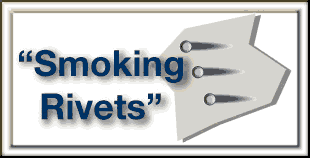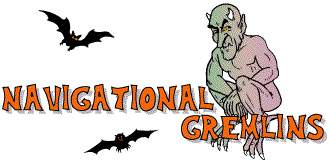 |
||||||||
| Issue Number 232 |
October
1998
|
|||||||
|
P.O. Box 189, Moffett Field, CA 94035-0189 |
||||||||
|
|
||||||||
 |
||||||||
| Issue Number 232 |
October
1998
|
|||||||
|
P.O. Box 189, Moffett Field, CA 94035-0189 |
||||||||
|
|
||||||||
 Pins
left installed in an aircraft's landing gear seem to be a thorn in the
side of pilots and mechanics alike. Many ASRS reporters have noted that
long streamers or remove-before-flight flags attached to the pins are
a helpful reminder for both flight and ground crews to check for the presence
of landing gear pins. However, the absence of flags in the wheel well
area is no guarantee that the gear will retract on command, as a DC-10-30
mechanic discovered:
Pins
left installed in an aircraft's landing gear seem to be a thorn in the
side of pilots and mechanics alike. Many ASRS reporters have noted that
long streamers or remove-before-flight flags attached to the pins are
a helpful reminder for both flight and ground crews to check for the presence
of landing gear pins. However, the absence of flags in the wheel well
area is no guarantee that the gear will retract on command, as a DC-10-30
mechanic discovered:
A number of other ASRS reporters, both pilots and mechanics, have admitted to overlooking this important detail associated with the DC-10-30 series aircraft: most DC-10s have only three gear pins, but the DC-10-30 has four. An aircraft's checklists for both maintenance and flight crews need to be specific enough to indicate the correct number of gear pins used on that particular model and series.
Another air carrier flight crew had all the flags visible and properly stowed in the cockpit as they were supposed to be --and were surprised when their landing gear would not retract. The Captain reports:
The Captain's future preflight plans no doubt will include looking specifically for gear pins attached to those carefully stowed flags!
A pilot began this report to ASRS quite succinctly: "Upon completion of a very short flight, it was determined that the aileron controls were rigged backward." Fortunately, that "very short flight" only got about 30 feet off the ground. The cause of the incident became obvious to the reporter, a manufacturer's test pilot, upon reflection.
This was a classic example of seeing what was expected--normal aileron movement--not the reality of the reversed aileron controls.
 In
mechanic's parlance, a "smoking rivet" is a loose or working
rivet whose vibration causes a black streak trailing aft. Smoking rivets
may be acceptable for continued service for short periods of time under
the limited conditions outlined in the aircraft's Structural Repair Manual
(SRM). The trick seems to be digging deep enough into all the footnotes
in the SRM to determine exactly what the limitations are, as an air carrier
Maintenance Controller reports:
In
mechanic's parlance, a "smoking rivet" is a loose or working
rivet whose vibration causes a black streak trailing aft. Smoking rivets
may be acceptable for continued service for short periods of time under
the limited conditions outlined in the aircraft's Structural Repair Manual
(SRM). The trick seems to be digging deep enough into all the footnotes
in the SRM to determine exactly what the limitations are, as an air carrier
Maintenance Controller reports:
Maintenance personnel must ensure that they are looking at the appropriate section of the SRM for the exact problem being researched. Careful reading of all limitations and instructions--including footnotes--should prevent misinterpretation of the corrective action.
Aircraft incidents on the ground can be as hazardous to persons and property as those that occur in flight. A commuter Captain reports a near ground-collision during a night operation:
The commuter crew had the right-of-way until they were clear of the runway. The timely initiation of a go-around by the twin's crew would have prevented this incident.
In another report of a near-collision--this one between the aircraft and a tug and its crew--an air carrier First Officer provides evidence that one departure salute may not be enough.
The tug crew's lack of communication set the stage for this incident. It is also possible that the flight crew's distraction over the second engine start caused them to fail to notice the "hold position" signal from the mechanic before commencing movement. Confirm the "go," or the operation is a "whoa."
 ASRS
sometimes receives reports of navigational "gremlins" that are
later attributed to interference from passengers' portable electronic
devices (PEDs) being used in the cabin. Many of these devices are officially
prohibited during specific flight regimes, but continue to be used in
spite of flight crews' efforts to ensure that the items are turned off.
Other items, such as pagers, are not on the list of prohibited equipment,
but should be according to this reporter, an air carrier Captain:
ASRS
sometimes receives reports of navigational "gremlins" that are
later attributed to interference from passengers' portable electronic
devices (PEDs) being used in the cabin. Many of these devices are officially
prohibited during specific flight regimes, but continue to be used in
spite of flight crews' efforts to ensure that the items are turned off.
Other items, such as pagers, are not on the list of prohibited equipment,
but should be according to this reporter, an air carrier Captain:
In a callback conversation with an ASRS analyst, the reporter stated that this was his third encounter with navigational interference associated with pagers.
 PAs
on PEDs
PAs
on PEDs
Public Address (PA) announcements made to the passengers during taxi-out may be forgotten later in the flight. Sometimes a repeat announcement is needed to have the desired effect, particularly when PEDs are considered a likely source of erroneous navigation indications. The repeat PA worked for this flight crew:
Apparently, the second time's a charm.
|
|
|---|
| A reported antenna hazard near a Texas airport |
| An MD-80 go-around caused by a taxiing MD-11's jet blast |
| Incorrect MEL procedure for a BAE-41 yaw damper malfunction |
| B-747 jetway collision due to faulty docking guidance system |
| Converging ILS/missed approach paths at a Colorado airport |
|
|
|
| Air Carrier Pilots | 1,859 |
|---|---|
| General Aviation Pilots | 827 |
| Controllers | 87 |
| Cabin/Mechanics/Military/Other | 176 |
| TOTAL | 2,949 |